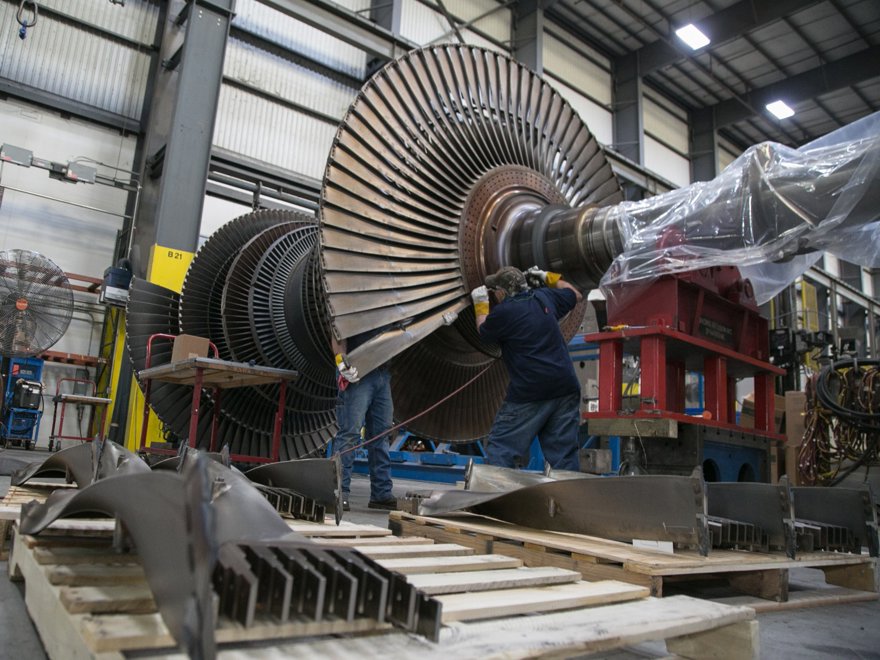
Image Source: Google
Steam turbines are crucial components in power generation plants, providing efficient and reliable energy production. When these turbines require maintenance or repair, it takes a skilled and experienced team to ensure they are restored to optimal functioning. In this article, we will take a closer look at the expertise and precision involved in the work of a top steam turbine repair company.
The Importance of Steam Turbines in Power Generation
Steam turbines play a key role in converting thermal energy into mechanical energy, which is then used to generate electricity. They are commonly used in power plants, both fossil fuel and nuclear, as well as in various industrial applications. The efficiency and performance of steam turbines are crucial for the overall productivity of power generation facilities.
Key Points:
- Steam turbines are essential for converting thermal energy into mechanical energy.
- They are widely used in power plants and industrial settings.
- The efficiency of steam turbines directly impacts the productivity of power generation facilities.
The Work of a Steam Turbine Repair Company
Steam turbine repair companies specialize in the maintenance, repair, and overhaul of steam turbines to ensure they operate at their best capacity. These companies have highly skilled technicians and engineers who are trained to handle a wide range of turbine models and configurations. The repair process involves a combination of technical expertise, precision engineering, and strict quality control measures.
Tasks Performed by a Steam Turbine Repair Company:
- Inspection and diagnosis of turbine components.
- Repair or replacement of damaged parts.
- Balancing and alignment of turbine components.
- Testing and performance evaluation of the repaired turbine.
The Expertise of a Skilled Team
One of the key factors that set a top steam turbine repair company apart is the expertise of its team. These professionals undergo rigorous training and certification programs to stay updated on the latest technologies and best practices in steam turbine repair. They possess a deep understanding of turbine mechanics, materials, and performance characteristics, allowing them to effectively troubleshoot issues and provide precise solutions.
Qualities of a Skilled Steam Turbine Repair Team:
- Technical expertise in turbine operation and maintenance.
- Ability to interpret technical drawings and specifications.
- Experience in working with various turbine models and manufacturers.
- Attention to detail and adherence to safety standards.
Precision Engineering in Turbine Repair
Repairing a steam turbine requires a high level of precision engineering to ensure the components function seamlessly together. From machining and welding to assembly and testing, every step in the repair process must be executed with accuracy and attention to detail. The use of advanced tools and equipment further enhances the precision of the repair work.
Elements of Precision Engineering in Turbine Repair:
- Precision machining of turbine components to tight tolerances.
- Welding techniques to ensure structural integrity and performance.
- Accurate alignment and balancing of rotor components.
- Testing and monitoring systems to verify performance metrics.
Quality Control and Testing Procedures
Before a repaired steam turbine is put back into service, it must undergo rigorous quality control and testing procedures to validate its performance. A top steam turbine repair company employs stringent quality control measures to ensure that the repaired turbine meets or exceeds industry standards. Testing procedures may include vibration analysis, thermal imaging, and performance testing to verify the integrity and efficiency of the turbine.
Quality Control Measures in Steam Turbine Repair:
- Visual inspection of all components for defects or damage.
- Non-destructive testing techniques, such as ultrasonic testing and liquid penetrant testing.
- Dynamic balancing of rotating parts to minimize vibration and wear.
- Performance testing under load conditions to verify operational efficiency.